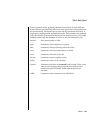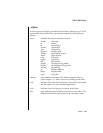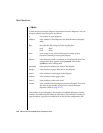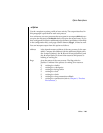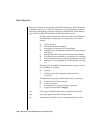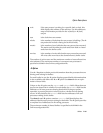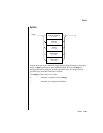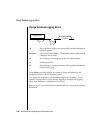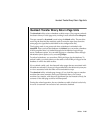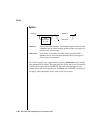
Utilities 7-101
Option Descriptions
The number of active users and the maximum number of users allowed are
also indicated. The maximum number of concurrent user processes is
specified as USERS in the OnLine configuration file.
-X Option
Use the -X option to obtain precise information about the processes that are
sharing and waiting for buffers.
For each buffer in use, the -X option displays general buffer information that
is also available with either the -b or -B option. See tbstat -b for an expla-
nation of these fields.
Unique to the -X option are the sharers and waiters fields. More than one
process can share data in a buffer. For each buffer, the sharers field lists the
addresses of all user processes sharing that buffer. During an update
operation, a process places an exclusive lock on a buffer and no sharing
occurs. In this situation, the waiters field lists the addresses of all user
processes waiting for the buffer.
The tbstat -b and -B options contain a waitlist field that displays the
address of the first user process waiting for the buffer. The -X option provides
a complete list of addresses for all waiting processes.
The maximum number of shared buffers is specified as BUFFERS in the
OnLine configuration file.
wait if the user process is waiting for a specific latch or lock, this
field displays the address of the resource. Use this address to
map to information provided in the -s (latch) or -k (lock)
output.
tout is the lock time-out counter.
nlocks is the number of locks that the user process is holding. (The -k
output should include a listing for each lock held.)
nreads is the number of read calls that the user process has executed.
The reads could be either physical reads from disk or virtual
reads from the buffer cache.
nwrites is the number of write calls that the user process has executed.
All write calls are writes to the shared-memory buffer cache.



